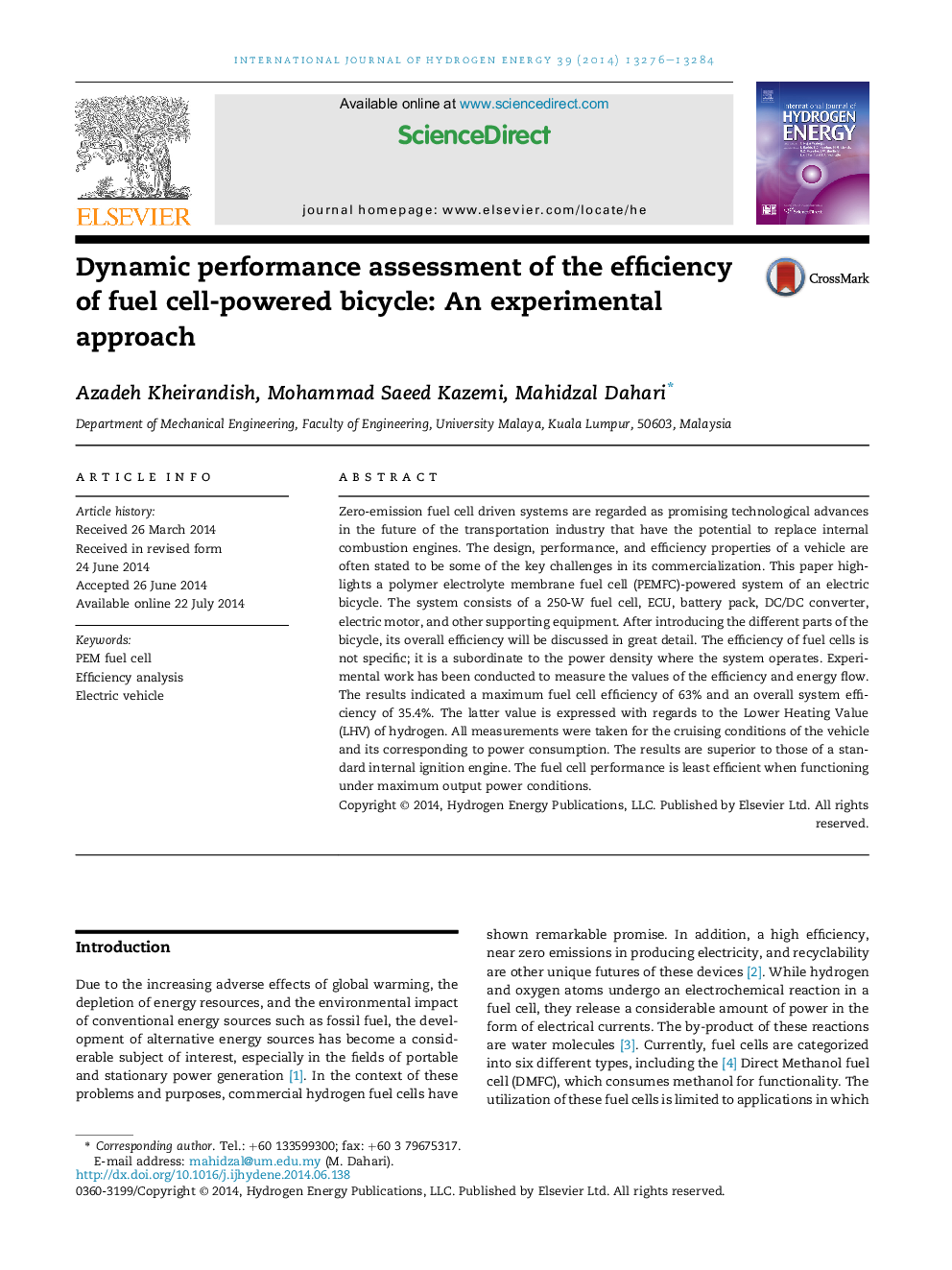| Article ID | Journal | Published Year | Pages | File Type |
|---|---|---|---|---|
| 1272615 | International Journal of Hydrogen Energy | 2014 | 9 Pages |
•We test and analyze the feature of electric-assisted bicycle powered by fuel cell.•We examine the performance and efficiency of 250-W PEM fuel cell.•The stack voltage is affected by the losses.•The efficiency of fuel cell decreases if power increases.•The overall system efficiency is 35%, while the stack efficiency varied 43–64%.
Zero-emission fuel cell driven systems are regarded as promising technological advances in the future of the transportation industry that have the potential to replace internal combustion engines. The design, performance, and efficiency properties of a vehicle are often stated to be some of the key challenges in its commercialization. This paper highlights a polymer electrolyte membrane fuel cell (PEMFC)-powered system of an electric bicycle. The system consists of a 250-W fuel cell, ECU, battery pack, DC/DC converter, electric motor, and other supporting equipment. After introducing the different parts of the bicycle, its overall efficiency will be discussed in great detail. The efficiency of fuel cells is not specific; it is a subordinate to the power density where the system operates. Experimental work has been conducted to measure the values of the efficiency and energy flow. The results indicated a maximum fuel cell efficiency of 63% and an overall system efficiency of 35.4%. The latter value is expressed with regards to the Lower Heating Value (LHV) of hydrogen. All measurements were taken for the cruising conditions of the vehicle and its corresponding to power consumption. The results are superior to those of a standard internal ignition engine. The fuel cell performance is least efficient when functioning under maximum output power conditions.
